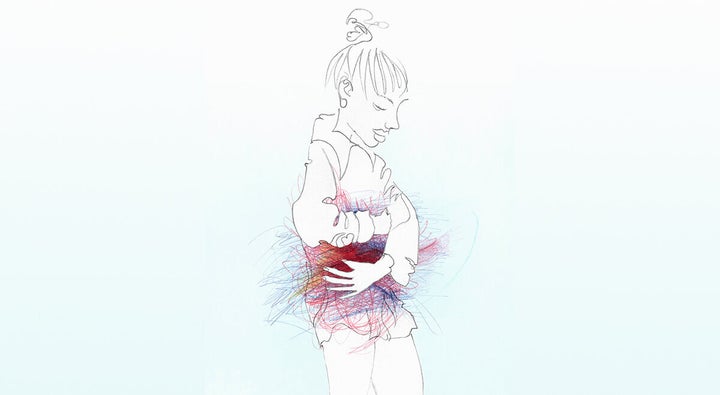
Endometriosis affects one in 10 women of reproductive age here in the UK – that’s roughly 1.5 million people. It causes sufferers to experience extremely painful or heavy periods, pain during and after sex, and fertility issues – all of which can greatly impact their lives.
But disturbingly, it takes, on average, seven years for women to get a diagnosis from the onset of their symptoms, states health charity Endometriosis UK.
Think you might be affected? Here’s what you need to know.
What is endometriosis?
Endometriosis is a common condition where tissue that behaves like the lining of the womb is found outside of the womb. These pieces of tissue can be found in many different areas of the body, but they are most commonly found on the ovaries, on the lining of the pelvis, behind the uterus and covering the top of the vagina, states NHS Choices.
The exact cause of endometriosis is unknown, but there are several theories. One of them is that the womb lining (endometrium) flows backwards through the fallopian tubes and into the abdomen instead of leaving the body as a period. This tissue then embeds itself on the organs of the pelvis and grows.
Another is that the condition is hereditary, being passed down through the genes of family members.
Endometriosis symptoms
Symptoms of endometriosis include painful periods or heavy periods; pain in the lower abdomen, pelvis or lower back; pain during and after sex; bleeding between periods and difficulty getting pregnant.
Other, lesser-known symptoms include: long-term exhaustion and tiredness; discomfort when urinating or passing stools; bleeding from the back passage or finding blood in your stools and coughing blood (this occurs in rare cases where the endometriosis tissue is in the lung).
Diagnosis and treatment
The condition can be difficult to diagnose because of the common symptoms – namely abdominal pain and heavy periods – which can be attributed to many other conditions. Additionally, in some cases, women suffering from endometriosis might not have any symptoms at all.
Endometriosis can be diagnosed with a laparoscopy – a surgical procedure that allows a surgeon to access the inside of the abdomen – or through a very detailed ultrasound scan.
There is no cure for the condition, so treatment usually combines a mixture of painkillers and hormone treatment to help make daily life more manageable.
Treatment will also depend on several factors such as age, symptoms, desire to have kids, how you feel about surgery, and previous treatments.
The first port of call is often pain medication, such as ibuprofen or paracetamol. Hormone treatment, including the combined oral contraceptive pill, is another option to limit or stop the production of oestrogen in your body. This is because oestrogen encourages endometriosis tissue to grow and shed.
Dr Helen Webberley, from My Web Doctor, previously told HuffPost UK the contraceptive pill could prove to be an effective treatment for mild endometriosis. “The treatment of mild to moderate endometriosis is to suppress ovulation and stop the monthly cycle of endometrial build up and the best way to do this is to use the contraceptive pill, something which can be done without the need for invasive tests,” she said.
“If this stops the pain and bleeding then you are closer to a diagnosis. Suppressing ovulation will stop the damage that endometriosis causes, saving the fallopian tubes and helping to promote fertility.”
Progestogens may also be used, which prevent the lining of the womb and any endometriosis tissue from growing quickly, however there are side effects such as weight gain, mood changes and irregular bleeding.
Some people may opt to have surgery to remove or destroy areas of endometriosis tissue. The main options are a laparoscopy, to cut out endometriosis tissue, or a hysterectomy, where the womb is removed.
Concerns
Lack of research into the condition means many women are left suffering without the support they need. According to a survey by Endometriosis UK, 25% of its membership had considered suicide because of the condition.
Meanwhile a study in 2011 found that endometriosis accounts for a significant loss of productivity among sufferers, equating to roughly 11 hours per woman, per week.
Jane Hudson Jones, chief executive of Endometriosis UK, previously told the Guardian: “It can be absolutely devastating. It can affect pretty much every area of your life – your work, career, income, relationships and fertility.”
For support, information and advice, visit Endometriosis UK.